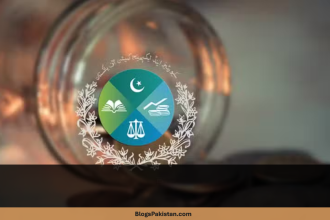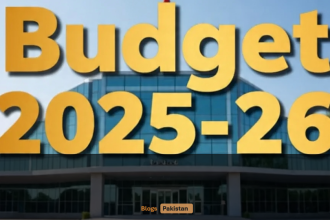Revamping the Economy Through Strategic Privatization
Pakistan’s government has unveiled an ambitious plan to privatize 24 state-owned enterprises (SOEs) in a phased manner, signaling a significant shift toward economic restructuring. The move, approved by the Cabinet Committee on Privatization, aims to reduce fiscal burdens, improve efficiency, and attract foreign investment. With entities ranging from airlines to power companies on the list, this initiative could reshape the nation’s economic landscape over the next five years.
The Three-Phase Privatization Strategy Explained
The Ministry of Privatization has categorized the process into three distinct phases, each with a clear timeline and objectives. This structured approach ensures transparency while addressing the complexities of transitioning public assets to private ownership.
Phase One: Immediate Priorities (Within One Year)
The first phase targets nine high-priority entities slated for privatization within the next 12 months. Leading the list is Pakistan International Airlines (PIA), the national flag carrier grappling with financial losses for decades. Alongside PIA, the First Women Bank and House Building Finance Corporation are set to undergo privatization, aiming to enhance their operational efficiency.
The energy sector also features prominently in Phase One, with power distribution companies like Islamabad Electric Supply Company (IESCO) and Faisalabad Electric Supply Company (FESCO) marked for transition. These entities are critical to addressing Pakistan’s chronic energy shortages and improving service delivery.
Phase Two: Medium-Term Goals (One to Three Years)
The second phase includes 11 enterprises, primarily from the insurance and power sectors. State Life Insurance Corporation and Pakistan Reinsurance Company, both giants in the insurance industry, are expected to attract significant investor interest. Their privatization could modernize the sector and expand coverage for millions of Pakistanis.
Power generation companies, such as Jamshoro Power Company and Northern Power Generation Company, are also part of Phase Two. Privatizing these entities aligns with global trends of leveraging private-sector expertise to upgrade aging infrastructure and adopt renewable energy technologies.
Phase Three: Long-Term Vision (Three to Five Years)
The final phase focuses on the Postal Life Insurance Company, a smaller entity with niche market penetration. While fewer in number, Phase Three projects emphasize thorough due diligence to maximize value for stakeholders.
Why Privatization Matters for Pakistan’s Economy
Decades of mismanagement and bureaucratic interference have left many SOEs financially unsustainable. By transferring ownership to private players, the government aims to:
- Boost operational efficiency through modern management practices.
- Reduce public debt by generating revenue from asset sales.
- Stimulate competition in Privatization sectors dominated by state monopolies.
According to recent reports, Pakistan has generated PKR 6.49 trillion from the privatization of 178 enterprises since 1992. This historical success underscores the potential of the current initiative to further stabilize the economy.
PIA and the Roosevelt Hotel: A Strategic Test Case
The privatization of Pakistan International Airlines (PIA) has emerged as a focal point. Defence Minister Khawaja Asif revealed that the government is exploring a strategic alliance for the airline, with a fallback plan to sell the Roosevelt Hotel in New York if negotiations falter. PIA’s inclusion in Phase One highlights its urgency, with officials aiming to complete the process by late 2025.
The Roosevelt Hotel, a prime asset in Manhattan, represents a lucrative opportunity for international investors. Its sale could inject much-needed foreign currency into Pakistan’s reserves, offering a buffer against economic volatility.
Addressing Concerns: Transparency and Public Interest
During a National Assembly session, lawmaker Bashir Khan raised questions about accountability and revenue utilization. The Parliamentary Secretary assured that proceeds from privatization would be channeled into public welfare projects, including infrastructure and healthcare. However, critics argue that safeguards must be implemented to prevent job losses and ensure fair valuation of assets.
Energy Sector Privatization: Powering Future Growth
With eight power distribution and generation companies on the list, the energy sector’s transformation is central to the privatization agenda. Chronic issues like transmission losses and unpaid bills have plagued Pakistan’s power sector, costing the economy billions annually. Private ownership could introduce smart grid technologies, improve billing systems, and reduce reliance on government subsidies.
Learning from Global Privatization Success Stories
Countries like the UK and India have demonstrated how privatization can revive struggling industries. For instance, British Telecom’s privatization in the 1980s led to technological advancements and expanded services. Similarly, Pakistan’s telecom sector flourished after the privatization of PTCL, setting a precedent for other industries.
Challenges on the Road Ahead
While the plan is ambitious, challenges remain. Labor unions have already voiced opposition to PIA’s privatization, fearing job cuts. Additionally, ensuring competitive bidding processes and preventing monopolies will require robust regulatory frameworks.
Final Thoughts
As Pakistan embarks on this transformative journey, the success of its privatization strategy will depend on execution transparency, stakeholder engagement, and adaptive policymaking. The phased approach allows for course corrections, ensuring that each step aligns with broader economic goals. With global investors closely watching, this initiative could mark a turning point in Pakistan’s quest for sustainable growth.










